#and it's a government building- not residential or commercial
Explore tagged Tumblr posts
Text
still not over the absolutely braindead take that "if you say brutalism looks dystopian, you care more about your aesthetic than people having homes!!!!"
like
can't criticize Shein or you must want their workers to be unemployed
oh you don't like that restaurant? guess you want the people eating there to STARVE
fuck both roses AND bread; nutrient-dense gray EnergyCubes would keep you alive so wishing for a better sensory experience is basically capitalist bootlicking
(I agree that considering Soviet-era brutalist apartment buildings in the context of "shit we need housing; put something up quick" is important for those specific structures- though I think that can coexist with "wow that's ugly" -but. this person did not stop there)
#hot takes#the discourse#the main brutalist structure in my area resulted from tearing down an entire neighborhood of working-class homes and businesses#and it's a government building- not residential or commercial#so I guess now YOU ~care more about your aesthetic than people having homes~#like dude you can enjoy a style of architecture without it being That Deep#I don't think everyone who dislikes High Victorian Addams Family Nonsense (my favorite) is a shill for big developers#(except the developers and house-flippers; fuck them)
165 notes
·
View notes
Text
Professional Janitorial Commercial Cleaning Services: Ensuring Clean and Healthy Workspaces Canada with GTB
In today’s fast-paced business environment, maintaining a clean and hygienic workplace is essential for productivity, employee health, and overall business reputation. Professional janitorial cleaning services in Canada play a crucial role in ensuring that commercial and industrial spaces remain spotless, sanitary, and inviting. With expert cleaning solutions, businesses can focus on their core operations while leaving cleanliness and maintenance in the hands of skilled professionals.
#Professional Janitorial Cleaning Services#Pro Commercial Cleaning Experts services in Surrey#commercial cleaning services canada#expert Industrial Cleaning in canada#gtbpro cleaning services canada#industrial cleaning services near surrey#industrial janitorial pro cleaning services canada#commercial & facility cleaning services surrey ca#Healthcare pro Cleaning surrey Services#educational cleaning services canada surrey#GTB Pro Cleaning for Retail Cleaning#janitorial Retail Cleaning Services in canada#government cleaning services near surrey canada#professional floor waxing services in surrey canada#professional pressure washing services surrey#pro floor waxing services near me#residential pressure washing services#professional window cleaning services canada#professional building washing and cleaning services canada#professional house cleaning service cost#house washing services near surrey#professional house washing services canada#professional roof cleaning services canada#best roof cleaning services canada
0 notes
Text
[ 📹 A father checks on his injured son laying on the floor of a local hospital after the Israeli occupation forces bombed their home in the Nuseirat Refugee Camp, in the central Gaza Strip, resulting in a number of casualties. ]
🇮🇱⚔️🇵🇸 🚀🏘️💥🚑 🚨
273 DAYS OF GENOCIDE IN GAZA: ISRAELI OCCUPATION SENDS DELEGATION TO RENEW HOSTAGE EXCHANGE TALKS WITH HAMAS, GAZA TO FACE DISASTER AS FUEL BEGINS TO RUN OUT, ISRAELI OCCUPATION ARMY CONTINUES MASS SLAUGHTER OF PALESTINIAN CIVILIANS
On 273rd day of the Israeli occupation's ongoing special genocide operation in the Gaza Strip, the Israeli occupation forces (IOF) committed a total of 4 new massacres of Palestinian families, resulting in the deaths of no less than 58 Palestinian civilians, mostly women and children, while another 179 others were wounded over the previous 24-hours.
It should be noted that as a result of the constant Israeli bombardment of Gaza's healthcare system, infrastructure, residential and commercial buildings, local paramedic and civil defense crews are unable to recover countless hundreds, even thousands, of victims who remain trapped under the rubble, or who's bodies remain strewn across the streets of Gaza.
This leaves the official death toll vastly undercounted as Gaza's healthcare officials are unable to accurately tally those killed and maimed in this genocide, which must be kept in mind when considering the scale of the mass murder.
The Israeli occupation Prime Minister, Benjamin Netanyahu, and his Security Cabinet have implemented the decision to send a delegation to meet in Doha, Qatar, for hostage exchange talks with the Palestinian resistance group Hamas.
Netanyahu met with his negotiating team prior to their departure to stress "again that the war will end only after achieving all of its goals, and not one moment earlier."
Meanwhile the occupation Prime Minister held a phone call with US President Joe Biden where Netanyahu reiterated his commitment to the Israeli occupation's goals in its ongoing genocidal war in the Gaza Strip, even as the occupation sends it's delegation to meet with the Hamas resistance group he swears to destroy.
The Israeli negotiating team will be led by the Mossad Chief David Barnea, who is expected to meet with the Hamas delegation prior to the arrival of the rest of his team, who will be brought in if the negotiations progress.
US Officials say they are optimistic that a deal can be reached, and the Americans said they welcomed the decision of the Israeli Prime Minister to send his delegation to Doha to continue with talks.
An anonymous American official who spoke with Reuters on Thursday evening said the Hamas proposal “includes a very significant breakthrough.”
"It can serve to advance negotiations. There’s a deal with a real chance of implementation. Though the clauses are not easy, they shouldn’t scupper the deal,” the official continued.
Another senior official told reporters on a conference call on Thursday that Hamas had made a significant adjustment in its demands for a hostage exchange deal, and expressed hope that it could lead to an agreement that would be a step towards an eventual ceasefire.
“We’ve had a breakthrough,” the official said in the call, going on to add that there were still some outstanding issues related to implementation of the agreement, and that a deal was not expected to be closed for several days.
The latest proposal is closely related to the one outlined by President Biden in a speech he gave back in May, which would introduce a format based on three stages of talks, which could ultimately lead to an eventual ceasefire and the release of all hostages.
The Israeli Prime Minister has faced intense criticism from both sides; some that want the government to reject all talks, versus groups such as the mother's of the hostages being held by the Palestinian Resistance who continue protests, demonstrating in Habima Square in Israeli-occupied Tel Aviv, joined by more than a thousand protesters to demand the Netanyahu regime come to a deal for the release of all hostages.
Meanwhile, in other news for Friday, July 5th, the World Health Organization (WHO) is warning the Gaza Strip faces a fuel shortage which could result in "catastrophic" consequences, as the enclave's healthcare system faces a potential collapse of basic services that require electricity to function.
Speaking on the social media platform X, WHO Director-General, Tedros Adhanom Ghebreyesus, said that "Further disruption to health services is imminent in Gaza due to a severe lack of fuel."
The WHO warned that just 90'000 liters of fuel entered the Gaza Strip on Wednesday, even as the healthcare sector alone requires a minimum of 80'000 liters daily just to provide basic care.
Fuel also must be provided to the some 21 ambulances which are still operational in Gaza, while the WHO said that fuel supplies were currently being rationed to "key hospitals", including the Nasser medical complex and Al-Amal Hospital in Khan Yunis, as well as the Kuwaiti Hospital in the city of Rafah, in Gaza's south, while the European Gaza Hospital in Khan Yunis has been out of service since Tuesday under threat of Israeli bombardment.
Further, Tedros Ghebreyesus gave warning that “losing more hospitals in the Strip would be catastrophic.”
In other news, the skin disease known as "scabies" has begun to spread widely among the Palestinian populations in densely populated camps, where Palestinian refugees in Gaza have taken shelter during the ongoing genocide.
Medical sources in Gaza say the accumulation of sewage water between the tents of the displaced, combined with the lack of hygiene due to the scarcity of clean water and basic necessities such as soaps and detergents, threatens to cause the accelerated spread of various infectious diseases and epidemics.
Currently, around 2 million displaced Palestinians live in shelters and camps under harsh conditions, with few resources or necessities that the population needs.
Worse still, a severe shortage of medicines and medical supplies threatens complications for the sick and wounded, who've packed into Gaza's hospitals by the hundreds and thousands. Already, dozens of Palestinians have died due to the shortage of medicines and supplies.
Since the start of the Israeli occupation's genocidal war in the Gaza Strip, international institutions and non-governmental organizations have warned of the spread of disease and epidemics among the displaced as overcrowding and a decline in personal hygiene has overtaken the majority of the population.
Medical sources have confirmed that thousands of Palestinians remain under threat of death as a result of continued lack of medicines, supplies, hygiene products and fuel for generators at the handful of remaining hospitals after 10 months of Israeli bombardment.
At the same time, the Israeli occupation's genocide of Palestinians in the Gaza Strip continues unabated as the occupation army intensified its bombing and shelling of residential neighborhoods and shelters, as well as public infrastructure.
In some of the latest attacks, Occupation warplanes bombed the Sheikh Nasser area, east of Khan Yunis, in the southern Gaza Strip, resulting in the deaths of two Palestinians who were transported to the Nasser medical complex in the city.
Similarly, Israeli fighter jets bombed a house in the Nuseirat Camp, in the central Gaza Strip, killing four civilians and wounding several others, while two others were killed after Zionist air forces bombed a gathering of civilians in the Al-Mawasi area, northwest of the city of Rafah, south of Gaza.
In another atrocity, Israeli occupation aircraft bombed a house belonging to the Al-Rifai family in the Al-Daraj neighborhood of Gaza City. After the bombing, civil defense crews and local residents managed to recover the bodies of two citizens killed in the strikes.
The horrors continued in Gaza's north when the Israeli occupation army bombed a site in Jabalia al-Balad, killing 5 Palestinian civilians, including at least 3 children, and wounding a number of others.
At the same time, occupation artillery shelling pummeled several areas in the town of Beit Lahiya, in the northern Gaza Strip, as well as the Nuseirat Camp in central Gaza.
In another assault, Zionist warplanes bombed a residential home belonging to the Al-Bardawil family in the Al-Daraj neighborhood, east of Gaza City, resulting in the deaths of 4 civilians and wounding several others who were taken to Al-Ahli Baptist Hospital in the city.
Simultaneously, occupation fighter jets bombarded the eastern neighborhoods of the Al-Shujaiya neighborhood of Gaza City, coinciding with intense gunfire from Zionist soldiers, who detonated a number of homes in the neighborhood, continuing the army's systematic destruction of Palestinian housing.
In another massacre, Israeli occupation forces bombed a residential house belonging to the Khader family on Old Gaza Street in the town of Jabalia, north of Gaza, killing 5 civilians, including Bassam Khader, his wife and three children.
The atrocities continued with the bombing of an Israeli occupation drone, which targeted Al-Sikka Street east of the Jabalia Camp, north of Gaza, resulting in the death of a civilian and injuring three others who were transported by the Palestinian Red Crescent Society (PRCS) to Kamal Adwan Hospital in Beit Lahiya.
Another body of a Palestinian who was killed by the occupation army near the Tahrir Station on Salah al-Din Street, east of the city of Rafah, was transferred to Nasser Hospital in Khan Yunis.
Meanwhile, Israeli artillery shelling targeted the Al-Nasr area, northeast of Rafah City, while at the same time, Zionist armored vehicles and other military vehicles penetrated into the Abu Halawa and Abu Al-Hussain areas, as well as the outskirts of the Al-Nasr area, east of Rafah City.
Additionally, occupation fighter jets bombed a home belonging to the Radwan family in the town of Bani Suhaila, east of Khan Yunis, in the southern Gaza Strip, resulting in the death of Adly Radwan, and wounding his wife, who was transported to the Nasser medical complex in the city.
The Israeli occupation forces also fired flares in the southeast of Khan Yunis, while Zionist warplanes bombed an uninhabited house in the town of Abasan Al-Kabira, east of the city.
The Zionist army went on to hammer the northwest of the Al-Nuseirat Camp, in central Gaza, using artillery shelling and gunfire, while occupation artillery shelling also targeted the north of Al-Zahra'a city, also in central Gaza.
As a result of the Israeli occupation's ongoing war of extermination in the Gaza Strip, the endlessly rising death toll now exceeds 38'011 Palestinians killed, including upwards of 10'000 women and well over 15'000 children, while another 87'445 others have been wounded since the start of the current round of Zionist aggression, beginning with the events of October 7th, 2023.
July 5th, 2024.
(No updated figures for death toll have been announced for July 5th)
#source1
#source2
#source3
#source4
#source5
#source6
#source7
#source8
#source9
#source10
#videosource
@WorkerSolidarityNews
#gaza#gaza strip#gaza news#gaza war#gaza genocide#genocide#war in gaza#genocide in gaza#israeli genocide#israeli occupation#israeli war crimes#war crimes#crimes against humanity#israel#palestine#palestine news#palestinians#free palestine#gaza conflict#israel palestine conflict#war#occupation#middle east#politics#news#geopolitics#international news#global news#breaking news#current events
444 notes
·
View notes
Text
Imperial City of Archades
The capital city of the Archadia Empire, Archades, is an academic hub that has existed since the time of the Galtean Alliance. The city is designed in an octagonal layout, with the Imperial Palace at its core. Surrounding the palace are government offices, followed by a bustling commercial district and residential areas. Towering skyscrapers dominate the skyline, reflecting the city's technological and cultural advancements.

Only the upper class of the Empire's citizens, Gentry and Ardent, live in the modern city area, and the residential areas for the political gentry and ardent citizens are clearly separated.

One of the city's most secretive landmarks is the Draklor Laboratory, hidden within the political district, where advanced weapons development takes place. However, the nature of its research remains shrouded in mystery.

Beyond the skyscrapers of central Archades lies Old Archades, a relic from the city’s earlier days as a city-state before the rise of the Empire. This area, filled with stone buildings from the Galtean Alliance era, has been neglected by the government and abandoned to foreigners and those without citizenship.

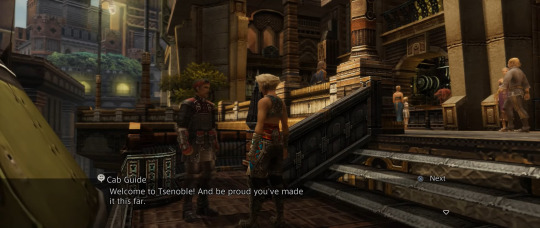
<- Located above the ardent district, this area is accessible only to citizens of sufficient status. Exclusive air cabs connect the two districts.
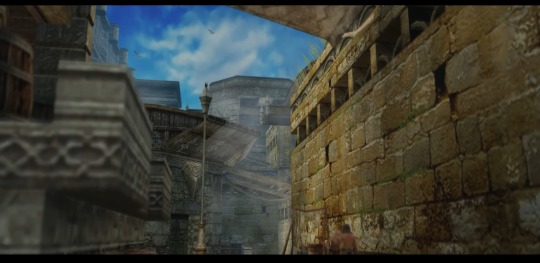
-> A stark contrast to the modern city, this neglected district preserves stone structures from the Galtean Alliance period. It remains an impoverished and forgotten corner of the Empire, with no plans for redevelopment.
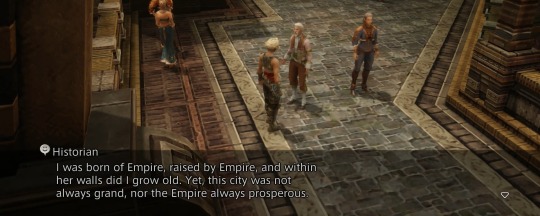
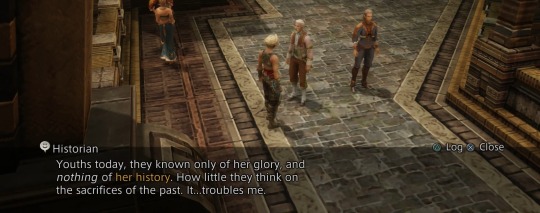
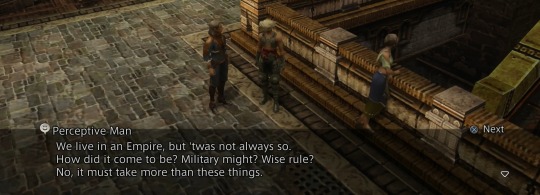
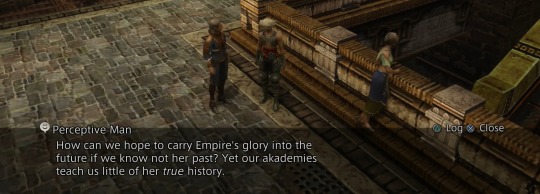
42 notes
·
View notes
Text
WHAT FUCKING CEASEFIRE???????

Ceasefire????????
Even “Israel” is admitting that the “ceasefire” doesnt go into effect until Sunday.
Yesterday, the first day of the ceasefire, IOF killed THIRTY Palestinian civilians.
While they were celebrating the end of freezing in tents flooded with freezing water, no blankets, exposed to the elements, belongings washed away, standing in dirty freezing water up to their knees, celebrating a return to their homes — if they were still standing — celebrating eating something that wasn’t beans or carrots after being crushed to death for hours upon hours for possibly nothing, celebrating 500 pound Boeing bombs designed to be dropped on fortified military bunkers incinerating them in tents literally melting them alive —




Israel has done this again & again.
When Israel had a “ceasefire” with Lebanon last year, they also continued killing civilians with absolute impunity.
So, what happens after the “ceasefire” starts Sunday?
Its a three phase “ceasefire” agreement that isnt fully in effect until the third and final phase is completed.
What are the terms by the time all three phases are complete?
Israel is supposed to exit North Gaza.
Israel is supposed to stop encroaching on Palestinian homes and land with illegal settlements in West Bank.
Israel is not supposed to occupy the Philadelphia corridor on the border of Rafah (southern Palestine) and Egypt.
Whats the reality?
The reason Israel destroyed every single hospital and university in Gaza as well as most of the buildings — residential, schools, mosques, commercial — is because they WANTED to ethnically cleanse Gaza — especially North Gaza — of Palestinians.
Why?
Gaza has $500 billion of UNTAPPED natural gas & oil.
Chevron is already building oil wells.
Chevron also supports Israel’s lobbying effortsfor the construction of the Eastmed Pipeline, a massive, EU sponsored fossil fuel infrastructure project that would exacerbate the climate crisis and whose feasibility is widely contested.
EastMed is a mega pipeline that would carry fossil gas from the disputed waters of the Levantine Basin (Cyprus, Israel and potentially Palestine) to Italy.
It would be one of Europe’s longest pipelines, and, reportedly, the world’s deepest.
The Israeli government is one of the most enthusiastic proponents of the EastMed pipeline, as it would secure a European export market for Israeli gas reserves.
The EastMed continues from Israel to Cyprus, where important offshore gas reserves are located.
Siemens was awarded the contract for building the EuroAsia Interconnector, a subsea cable that will link Israel’s electricity grid with Europe’s, allowing its illegal settlements on stolen Palestinian (and Syrian) land to benefit from Israel-EU trade of electricity produced from fossil gas.
Which is why Israel is already saying they are not going to give back ANY lands that they genocidally acquired in Lebanon or Syria.
The hostages on both Israel & Palestines sides are supposed to be exchanged in this “ceasefire” —
WHAT ABOUT THE 450 PALESTINIAN MEDICAL PROFESSIONALS THAT ISRAEL ILLEGALLY DETAINED & ARE CURRENTLY TORTURING AT DETENTION CAMPS LIKE SDE TEIMAN FOR THE CRIME OF PRACTICING MEDICINE & SAVING PALESTINIAN CIVILIAN LIVES?
WHERE IS THE DEAL FOR THESE INNOCENT MEDICAL PROFESSIONALS WHO ARE COVERED & SHOULD BE PROTECTED UNDER GENEVA CONVENTIONS?
WHERE IS DR. HUSSAM???????????????
•IOF murdered Dr. Hussams son - also a doctor at Kamal Adwan hospital - in front of Dr. Hussam at the entrance to the hospital. •The IOF then bulldozed & desecrated Dr. Hussams sons gravesite. The IOF also seriously & greivously injured Dr. Hussam.
•On 12/27/24, the IOF forced Dr. Hussam via commands issued over a megaphone speaker to exit Kamal Adwan hospital alone & walk over the rubble — of destroyed buildings & his own sons bulldozed gravesite — towards an awaiting Israeli military tank.
•Once Dr. Hussam reached the Israeli tank, the IOF immediately detained Dr. Hussam & transported him to Sde Teiman detention center.
•Sde Teiman is the SAME exact detention center where the IOF raped Dr. Adan Al-Bursh - Director of Al-Shifa hospital - to death less than two months ago in November 2024!
•Per eyewitnesses - Sde Teiman released detainees - Dr. Hussam upon his arrival at the detention center was stripped, brutally whipped, beaten with batons, humiliated & severely tortured.
•Israel initially denied all of two days ago having any information on Dr. Hussams whereabouts — this is despite LITERAL videos clearly showing Dr. Hussam entering an Israeli military tank — then the IOF admitted yesterday to detaining Dr. Hussam on MADE UP COMPLETELY FALSE charges that he is a “Hamas Colonel” & “Hamas operative”.
•THEN A DAY AFTER THE ABOVE, THE IOF DECLINED DR. HUSSAM AN ATTORNEY & ALSO DENIED AN ATTORNEY THE OPPORTUNITY TO EVALUATE DR. HUSSAMS CURRENT DETAINMENT CONDITIONS TO CONFIRM THEY WERE HUMANE.
•THEN THREE DAYS AFTER THE ABOVE, AN ISRAELI COURT EXTENDED DR. HUSSAMS DETENTION UNTIL 2/13/25.
•THE IOF ALSO EXTENDED THE BAN ON LEGAL COUNSEL FOR DR. HUSSAM UNTIL 1/22/25.
WHERE IS PROOF OF LIFE FOR DR. HUSSAM???????
WHERE??????????
WHERE IS JUSTICE, WHERE IS FREEDOM FOR THE 450 PALESTINIAN MEDICAL PROFESSIONALS CURRENTLY ILLEGALLY DETAINED & TORTURED BY THE IOF FOR DOING NOTHING BUT SAVE THEIR PATIENTS LIVES??????????
WHERE IS THE CEASEFIRE FOR THEM???????
WHERE IS THE CEASEFIRE FOR THE 200 PALESTINIAN JOURNALISTS THAT ISRAEL SPECIFICALLY TARGETED & KILLED FOR THE CRIME OF REPORTING ON THE GENOCIDE????????
WHERE IS THE CEASEFIRE FOR THE 1000 PALESTINIAN MEDICAL PROFESSIONALS MURDERED FOR THE CRIME OF PRACTICING MEDICINE?????????
WHERE???????????????



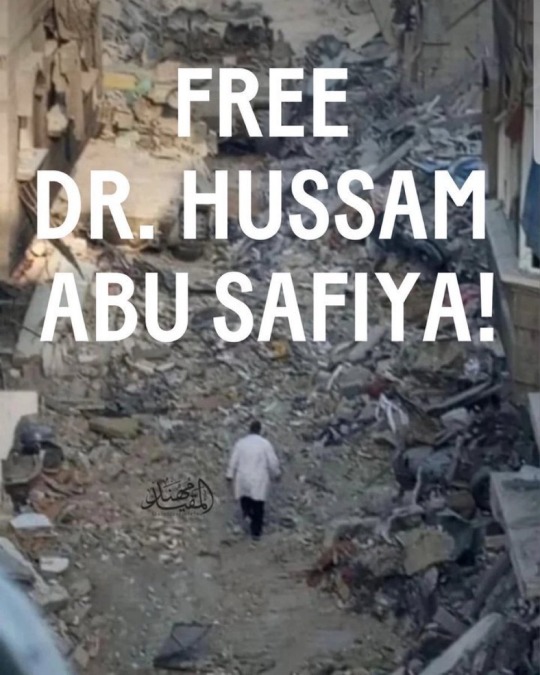
#gaza help#gaza medics#free gaza medics#gazaunderattack#gaza genocide#free gaza#gaza strip#free palestine#anti capitalism#social justice#anti capitalist#climate change#zionistterror#antizionist#anti zionisim#save gaza#falasteen#joe biden#fuck biden#fuck trump
17 notes
·
View notes
Text

𝐀𝐫𝐜 𝐈
𝐀𝐫𝐜 𝐈 (you are here) | 𝐀𝐫𝐜 𝐈𝐈 | 𝐀𝐫𝐜 𝐈𝐈𝐈
Ideas and rambles

— The Divine City is the place where the henvely meet the mortal.
— around 50-60% of the inhabitants have visions.
— the city is divided into three sections:
╰The outer section: this section is where majority of the population lives; around 50%. In this section everyone is allowed, from vision bearers to common folk.
╰The middle section: those who have visions are able to reside here(outside of government related jobs, for example: delegations, government employees, etc.). Any government retaliated issues, that don’t need divine approval, are dealt with here. Embassies, as well as government buildings, are located in the center of the Middle section where the commercial district is. For this reason Non-vision bearers are able to come and go as they please. The only ones allowed to stay and live in the middle section are vision bearers(aside for the government worker. Sorry, I don't make the rules). Around 30-40% of the population live here.
╰The core section: less than 10% of the population lives here. This is so because “her Grace” lives in this section. But she isn’t the only one that lives here, the Elite Academies of the city were constructed here by “her Grace”. The Core can be divided further, and it goes from outside to inside: residential area for students and staff, the academies follow, and last but not least, The Palace. The Palace is reserved for special occasions, for example: Archon meetings(once every few centuries), yearly galas(for a number of reasons: graduations), trials(mostly that are deemed necessary by celestia), and so on.
It is greatly appreciated for reblogs and commenting of this post
#genshin impact#genshin impact sagau#reader insert#genshin#reader input#genshin x reader#genshin impact x reader#sagau#sagau x reader#sagau brainrot#sagau idea
152 notes
·
View notes
Text
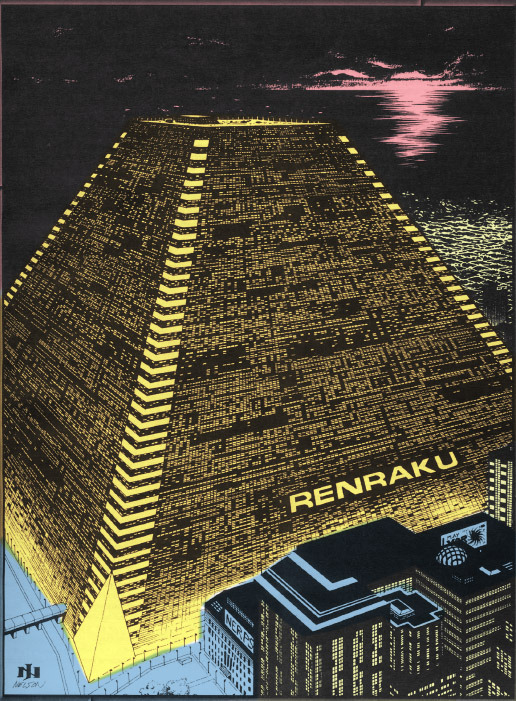
Renraku Arcology - Illustration by Jim Nelson
The Renraku Arcology — formerly known as the Self-Contained Industrial-Residential Environment (SCIRE), and now known as Arcology Commercial and Housing Enclave (ACHE) — a massive, truncated, pyramid that was (and possibly still is) the ninth largest building in the world, and is a major landmark in modern Seattle.
Construction started in 2040, with completion in 2054. Originally home to over 90,000 Renraku employees and family members. The SCIRE served as a shopping mall, industrial complex, and basically self-contained private city of Renraku within the Seattle Metroplex. In the aftermath of the events known as Arcology Shutdown (2059-2061), the building was turned over to Seattle government, and turned into a massive public housing project.
14 notes
·
View notes
Note
I’m actually like foaming at the mouth for your legion posts.
Could you dive more into some legion cities like you mentioned in the women’s role post? I’d like to hear your thoughts on some cities they’d have established’
- ☢️🍑
ah thank you! hyperfixation is ruining my academic life but im glad you're enjoying my endless ramblings about fictional fascists.
before i start anything pls note that im not american, and the only knowledge I have of that country is from badly dubbed cowboy movies and fallout. +im taking this map as my reference. idk how true it is, but it's the only one i can find that actually has names on it.
I'm only going to cover two cities bc otherwise this post would be unethically long.
Flagstaff, the capital city!!
i imagine flagstaff as the only city in the legion with a properly structured city plan. the fallout wiki describes caesar as having "established a capital of sorts amid the ruins of flagstaff." ruins. keep that in mind.
the capital of the legion carries roman urban planning principles and also is a city that is built around pre-war ruins. at the heart of flagstaff old world lies: the focal point of political, economic, and social life. this centre is where key buildings stand—antebellum structures repurposed as government bureaus, alongside a grand temple dedicated to mars. next to these is the economic heart of the city: the bazaar. the bazaar is organized around specialized niches, with different sections dedicated to specific trades. alongside it is an ottoman-style merchant inn providing paid shelter for traders arriving from west.
they have a theatre, too. i know it’s out of character, but let me have this.
as the city expands outward from the town square, the zones transition from administrative and commercial to residential and rural ones. the inner city, just beyond the square, is wealthy, mostly housing the families of high ranking officers. while the main trade is at town square. the inner city also has commercial areas such as general stores + communal spaces like bathhouses.
further out is the industrial zone where freeborn working-class citizens live. this zone is mostly workshops like small textile factories. the legion definitely doesn't have large-scale industries, but small, manual production is reasonable enough to assume.
and at the outermost zone are the pastoral settlemets, farmlands, and brahmin ranches. the number of houses is sparse, mostly resembling small mojave towns. this region supplies food and raw materials to the city, yet most of those who live and work here have probably never set foot in the pre-war side of the capital city.
Yuma
okay, so i don't know much about real life yuma, and all we're told in the game is that this city has a us military base that folks and merchants scavenge from. i have written a fanfic before (vulpes brainrot) and described this city as "the smallest saddest town in arizona."
yuma is an unremarkable city, very close to the border of NCR, always under the looming threat of becoming an active warzone. it is a harsh, rural place with very few civilian settlements. most of its population consists of legionaries garrisoned there, living beyond the city’s main walls in nomadic military camps, like cottonwood cove.
yuma is a city of funeral, countless soldiers are sent off from there to campaigns in mojave, and they never return. death clings onto this little city. it is in a constant state of mourning. its proximity to the Republic breeds paranoia among the people, sorrow lingers over every home, every camp. yuma is a small city, a sad city.
it is caught between the grandeur remnants of old world and the melancholia of a fallen age—like post-roman europe, where people gazed upon ruins, knowing they would never have that greatness again. yuma embodies that same despair. those bases of america, the grand monuments of a power they can't even comprehend is reduced to cattle pastures and people scavenge within the decayed husk of america. yet unlike flagstaff, they do not try to make a city out of the ruins, they only reduce that bygone glory into sources of scrap.
+ my pre-canon decanus vulpes hc is that he was also stationed at this city before the insubordination incident. i want him to be sad
#city planning is fun#disko asks#legionposting#fallout new vegas#fallout#fnv#caesar's legion#heart of flagstaff#text post#.txt
14 notes
·
View notes
Text
George Joseph and Joanna Walters at The Guardian:
After Wednesday’s fatal crash which took down a commercial jet and a military helicopter on a training flight at Washington DC’s Reagan National airport, public officials and aviation experts are resurfacing concerns about how uniquely congested the airspace is around the country’s capital. As of Thursday night, authorities have said all 64 people on the American Airlines flight were presumed dead as well as three more on the army helicopter, making the incident the deadliest US air tragedy since 2001. On Thursday, during his confirmation hearing before the Senate armed services committee, Daniel Driscoll, Donald Trump’s nominee for secretary of the army, questioned why military helicopters need to conduct training exercises near such a busy commercial airport. Driscoll told lawmakers that the incident seemed “preventable” and vowed to review army practices. “There are appropriate times to take risk and inappropriate times to take risk,” he noted. “I think we need to look at where is an appropriate time to take training risk, and it may not be at an airport like Reagan.” The US military has provided little information on its helicopter training activities near the capital and did not immediately respond to requests for comment. Martin Chalk, a former British Airways captain who retired in 2020, posited that military pilots might need to train in this particular area to prepare for transporting senior political and military figures to and from the area, which is close to the Pentagon as well as the White House, Capitol Hill and other buildings at the heart of the federal government. [...] No one answered his question, he told the Guardian on Thursday. “We lost more than 60 people, and two aircraft, and we shut down a major airport, and it was completely avoidable,” he said. “There’s so many places they could have been doing training. Why did they have to do it at the end of the runways of DCA?” Johnson continued, referring to the airport code of Reagan National airport. Federal lawmakers from Virginia and Maryland have also issued warnings about the excessive number of aircraft flying near each other over the country’s capital. [...] Lawmakers and citizens have previously raised concerns about the crowded skies over the greater Washington DC area, however. Last year, Bill Johnson, a commercially-certified pilot and a retired US army explosives expert, saw more than 20 UH-60 army helicopters fly over his house in one hour as he was working outside in his vegetable garden in Annandale, a residential community in Virginia’s Washington DC suburbs.
Prior to the deadly crash in the Potomac on Wednesday night, there have been warnings about airspace congestion in the DC skies.
See Also:
HuffPost: DC Airport Had Been Plagued By Safety Concerns Ahead Of Deadly Crash
#Potomac River Midair Collision#Washington DC#PSA Airlines Flight 5342#Airline Safety#Aviation#Airline Travel
9 notes
·
View notes
Text
For the past several years, in response to rapidly rising housing prices and rents, local and state governments from Maine to Florida to Montana have been investigating policy changes that could make it easier to build more homes. One emerging strategy is citywide or statewide zoning reforms that legalize smaller, cheaper homes, including accessory dwelling units (ADUs), duplexes, and small apartment buildings.
The language used to discuss these policy changes is still evolving. Media, academics, and advocacy groups on both sides of the debate frequently use the phrase “end single-family zoning”—a statement that implies radical change, either for good or ill. But good-faith supporters of abundant housing should drop this phrase from their talking points for two reasons. First, “end single-family zoning” is sloppy, imprecise language that doesn’t help policymakers think through the details of their policy choices. Moreover, the vagueness and negative framing can unnecessarily confuse and scare voters.
To amend single-family zoning, local governments must decide which additional housing types to legalize
The phrase “end single-family zoning” fundamentally misunderstands how zoning laws work. The basic structure of zoning laws divides each city, town, or county into a set of districts or “zones,” and specifies the type of structures and activities that are allowed within each zone. Most communities designate some zones solely for residential uses, setting aside other zones for offices, retail, or industrial uses. Within each zoning district, the law specifies which structure types are allowed and not allowed. Figure 1 shows a simple illustration of how zoning laws enumerate housing types; each column represents a sample zoning district, with the rows indicating allowed or prohibited housing types.
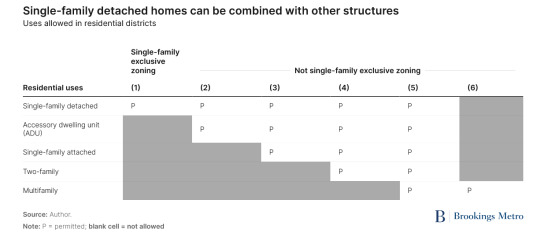
Single-family-exclusive zones allow only detached residences for one household—all other structures are prohibited (Column 1). Single-family-exclusive zones are the dominant land use in most communities, accounting for roughly 75% of residential land. But many other residential zones allow a mixture of housing types, ranging from single-family detached homes to townhouses to multifamily buildings. The districts represented by Columns 2 through 6 could all be described as “not single-family-exclusive zoning,” but in practice, a district that allows only detached homes and ADUs (Column 2) will look and feel quite different than a district that allows everything from detached homes to high-rise apartment buildings (Column 5).
Put simply, local governments can “end” single-family zoning in a variety of different ways—and which types of housing they choose to legalize is an important policy decision. “Legalize ADUs and duplexes” may not have the same rhetorical punch, but it’s a more precise and accurate way of describing a policy proposal.
The government is not plotting to expropriate and demolish single-family homes
Besides obscuring what housing types will be added, the phrase “end single-family zoning” can mislead casual observers into believing that proposed zoning changes will make single-family homes illegal. After all, “end single-family zoning” and “end single-family housing” sound quite similar, especially to the majority of people, who are not experts on the nuts-and-bolts of land use regulation.
In practice, zoning reforms that legalize ADUs, townhouses, duplexes, and apartments typically do not place new restrictions on single-family detached homes. Most residential zones that permit higher-density forms of housing also explicitly allow single-family detached homes. The zones that prohibit development of new single-family homes tend to be commercial or industrial areas (where non-residential land uses create negative spillovers on nearby homes), and a few zones reserved for high-density housing (Column 6). Moreover, zoning changes primarily impact future development; existing buildings that no longer meet zoning or building code requirements are typically “grandfathered in,” meaning that current property owners can continue to use the buildings.
But these technical aspects of zoning are not transparent to voters and elected officials. Using clear, precise language will help good-faith participants better understand the public debate about zoning reforms. And the negative framing of “end single-family zoning” provides easy opportunities for committed NIMBYs (“Not In My Backyard”)—or more politely, “neighborhood defenders”—to claim that zoning changes will cause wholesale demolitions of existing homes or even “abolish the suburbs.”
Precise, moderate language can help set reasonable expectations
Zoning reforms are not an end unto themselves; the goal is for communities to develop more abundant and affordable housing. Revising zoning laws to legalize a more diverse range of homes—particularly smaller homes that use less land—is one step in a broader policy agenda. Local and state governments that want to boost housing supply also need to rethink related regulations, including discretionary review processes, building codes, parking requirements, and impact fees. Land use patterns change slowly over many years; both advocates and opponents of zoning reform should temper their expectations of an overnight revolution.
9 notes
·
View notes
Text
The Observer
Monarchy
King and Prince William’s estates ‘making millions from charities and public services’
Duchies of Cornwall and Lancaster likely to make at least £50m from leasing land to services such as NHS and schools, according to investigation
Richard Palmer
Sat 2 Nov 2024 20.50 CET
King Charles and Prince William’s property empires are taking millions of pounds from cash-strapped charities and public services including the NHS, state schools and prisons, according to a new investigation.
The reports claim the Duchies of Lancaster and Cornwall, which are exempt from business taxes and used to fund the royals’ lifestyles and philanthropic work, are set to make at least £50m from leasing land to public services. The two duchies hold a total of more than 5,400 leases.
One 15-year deal will see Guy’s and St Thomas’ NHS hospital trust in London pay £11.4m to store its fleet of electric ambulances in a warehouse owned by the Duchy of Lancaster, the monarch’s 750-year-old estate.
The king will also make at least £28m from windfarms because the Duchy of Lancaster retains a feudal right to charge for cables crossing the foreshore, according to an investigation by Channel 4’s Dispatches and the Sunday Times.
William’s Duchy of Cornwall, the hereditary estate of the heir to the throne, has signed a £37m deal to lease Dartmoor prison for 25 years to the Ministry of Justice, which is liable for all repairs despite paying £1.5m a head for a jail empty of prisoners because of high levels of radon gas.
His estate also owns Camelford House, a 1960s tower block on the banks of the Thames, which has brought in at least £22m since 2005 from rents paid by charities and other tenants. Two cancer charities, Marie Curie and Macmillan – of which the king is a longstanding patron – have both recently moved out to smaller premises.
The Duchy of Cornwall has charged the Royal Navy more than £1m to build and use jetties and moor warships. It also charges the army to train on Dartmoor but the Ministry of Defence refused a Freedom of Information Act request asking how much it costs. The duchy also made more than £600,000 from the construction of a fire station and stands to get nearly £600,000 from rental agreements with six state schools.
In spite of the king and Prince William’s speeches and interventions on environmental issues, many residential properties let out by the royal estates are in breach of basic government energy efficiency standards.
InvestigatorsThe investigation found 14% of homes leased by the Duchy of Cornwall and 13% by the Duchy of Lancaster have an energy performance rating of F or G. Since 2020, it has been against the law for landlords to rent out properties that are rated below an E under the Minimum Energy Efficiency Standards regulations.
The Duchy of Lancaster said: “Over 87% of all duchy-let properties are rated E or above. The remainder are either awaiting scheduled improvement works or are exempted under UK legislation.”
The royal estates also have deals with mining and quarrying companies.
The investigation has prompted calls for a parliamentary investigation and for the two empires to be folded into the crown estate, which sends its profits to the government. The king and Prince William pay income tax on profits from the estates after business expenses have been deducted, but both now refuse to say how much.
Critics say the estates, the income from which have been used by successive governments to keep the headline cost of the monarchy to the taxpayer down, enjoy a commercial advantage over rivals because they are exempt from corporation tax and capital gains tax.
Baroness Margaret Hodge, a former chair of the Commons public accounts committee, said the duchies should at least pay corporation tax. “This would be a brilliant time for the monarch to say, I’m going to be open, and I want to be treated as fairly as anybody,” she said.
Both duchies said they were commercial operations that complied with statutory requirements to disclose information. They also emphasised their efforts to become greener.
The Duchy of Lancaster said: “His majesty the king voluntarily pays tax on all income received from the duchy.”
-
&
Over the last two decades the royals have made £22m from the rental of office space in "Charity Towers" at commercial rates to organisations such as Marie Curie, MacMillan Cancer Support and Comic Relief. The King is the patron of Marie Curie and MacMillan
(from someone who is not a sycophant)
Disgusting
And they are already getting half a billion every year
6 notes
·
View notes
Text
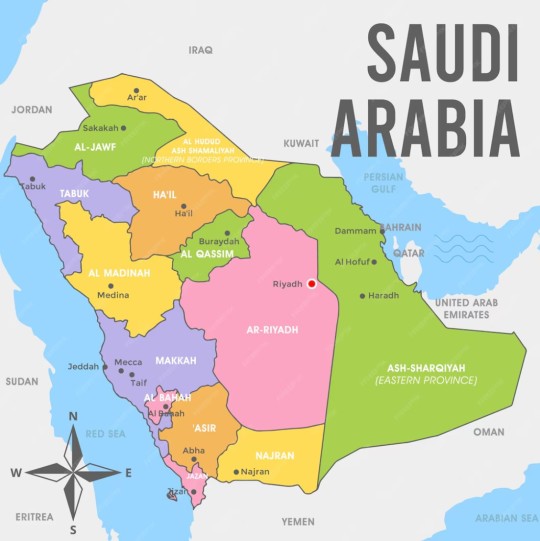
The Top 10 Construction Firms Driving Growth in Saudi Arabia The construction sector in Saudi Arabia is experiencing rapid growth, driven largely by the Kingdom's Vision 2030 initiative, which aims to diversify the economy and reduce dependency on oil. Here are the top 10 construction firms playing a major role in this transformation: 1. Saudi Binladin Group – Established in 1931, this company has led some of Saudi Arabia’s most iconic projects, such as the Grand Mosque expansion in Mecca and King Abdulaziz International Airport(DTC - درر تمام | Contracting Company)(ControlTap). 2. El-Seif Engineering Contracting Company – Known for its work on high-rise buildings, including the Jeddah Tower, which aims to be the world's tallest structure(DTC - درر تمام | Contracting Company). 3. Al-Rashid Trading & Contracting Co. (RTCC) – Involved in significant infrastructure projects such as the Riyadh Metro, RTCC has been instrumental in developing the Kingdom's transportation network( ControlTap). 4. Nesma & Partners Contracting Co. Ltd. – This firm has a diverse portfolio, contributing to major projects like the King Saud University and the Riyadh Metro(DTC - درر تمام | Contracting Company). 5. Almabani General Contractors – Established in 1972, this firm has contributed to the development of King Abdullah Economic City and other key projects(ControlTap). 6. Controltap General Contracting – Specializing in MEP services, this company has been integral to numerous residential and commercial developments(DTC - درر تمام | Contracting Company)(ControlTap). 7. Al Harbi Trading & Contracting Co. Ltd. – Known for its involvement in large government and religious projects, including the Medina Holy Mosque expansion(ControlTap). 8. Alfanar Construction – With expertise in construction and manufacturing, Alfanar has played a significant role in developing industrial and power infrastructure(ControlTap). 9. Golden Obelisk Contracting Co. – Renowned for luxury residential and commercial projects, Golden Obelisk is known for its high-quality standards and timely delivery(ControlTap). 10. Bechtel – A major international player, Bechtel has been involved in key Saudi projects such as the Riyadh Metro and various infrastructure developments(Mordor Intel). These companies are shaping Saudi Arabia's future by contributing to megaprojects across sectors like transportation, residential development, and energy infrastructure, all aligned with Vision 2030.
#KhalidAlbeshri #خالدالبشري
#advertising#artificial intelligence#autos#business#developers & startups#edtech#education#finance#futurism#marketing
10 notes
·
View notes
Text
ATLANTA (AP) — A new reactor at a nuclear power plant in Georgia has entered commercial operation, becoming the first new American reactor built from scratch in decades.
Georgia Power Co. announced Monday that Unit 3 at Plant Vogtle, southeast of Augusta, has completed testing and is now sending power to the grid reliably.
At its full output of 1,100 megawatts of electricity, Unit 3 can power 500,000 homes and businesses. Utilities in Georgia, Florida and Alabama are receiving the electricity.
Nuclear power now makes up about 25% of the generation of Georgia Power, the largest unit of Atlanta-based Southern Co.
A fourth reactor is also nearing completion at the site, where two earlier reactors have been generating electricity for decades. The Nuclear Regulatory Commission on Friday said radioactive fuel could be loaded into Unit 4, a step expected to take place before the end of September. Unit 4 is scheduled to enter commercial operation by March.
The third and fourth reactors were originally supposed to cost $14 billion, but are now on track to cost their owners $31 billion. That doesn’t include $3.7 billion that original contractor Westinghouse paid to the owners to walk away from the project. That brings total spending to almost $35 billion.
The third and fourth reactors were originally supposed to cost $14 billion, but are now on track to cost their owners $31 billion. That doesn’t include $3.7 billion that original contractor Westinghouse paid to the owners to walk away from the project. That brings total spending to almost $35 billion.
The third reactor was supposed to start generating power in 2016 when construction began in 2009.
Vogtle is important because government officials and some utilities are again looking to nuclear power to alleviate climate change by generating electricity without burning natural gas, coal and oil.
“This project shows just how new nuclear can and will play a critical role in achieving a clean energy future for the United States,” Southern Co. CEO Chris Womack said in a statement. “Bringing this unit safely into service is a credit to the hard work and dedication of our teams at Southern Company and the thousands of additional workers who have helped build that future at this site.”
In Georgia, almost every electric customer will pay for Vogtle. Georgia Power currently owns 45.7% of the reactors. Smaller shares are owned by Oglethorpe Power Corp., which provides electricity to member-owned cooperatives, the Municipal Electric Authority of Georgia and the city of Dalton. Oglethorpe and MEAG plan to sell power to cooperatives and municipal utilities across Georgia, as well in Jacksonville, Florida, and parts of Alabama and the Florida Panhandle.
Georgia Power’s 2.7 million customers are already paying part of the financing cost and elected public service commissioners have approved a monthly rate increase of $3.78 a month for residential customers as soon as the third unit begins generating power. That could hit bills in August, two months after residential customers saw a $16-a-month increase to pay for higher fuel costs.
Commissioners will decide later who pays for the remainder of the costs of Vogtle, including the fourth reactor.
79 notes
·
View notes
Text
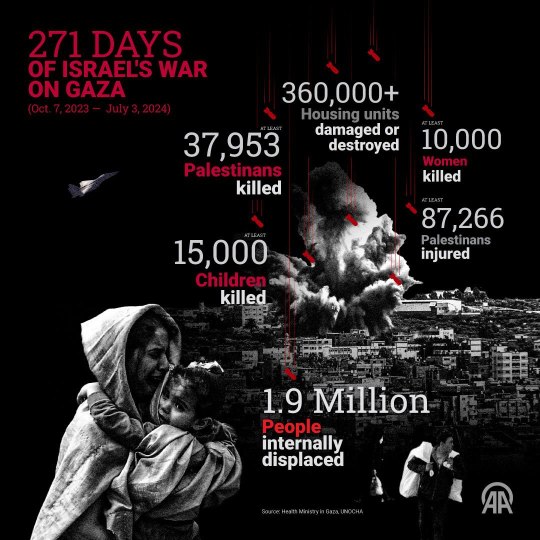
[ 📹 Scenes of chaos and fear after the Israeli occupation forces bombed a school housing displaced Palestinian families opposite Nasser Medical Complex west of the city of Khan Yunis, in the southern Gaza Strip, after displacing civilians from other areas of the enclave. 📈 Current death toll in Gaza exceeds 37'953 Palestinians killed, while another 87'266 others have been wounded since Oct. 7th. ]
🇮🇱⚔️🇵🇸 🚀🏘️💥🚑 🚨
GENOCIDE CONTINUES ON DAY 271: ISRAELI OCCUPATION REACHES OUT TO GAZA CLAN LEADERS, HAMAS WARNS OF RETALIATION FOR COLLABORATORS, ZIONIST COLONIAL SETTLERS CONTINUE RAIDING AL-AQSA MOSQUE, AL-QUDS BRIGADES SAY HOSTAGES ATTEMPTED SUICIDE AS THEIR TREATMENT BECOMES MORE SEVERE FOLLOWING REPORTS OF TORTURE IN ISRAELI PRISONS, SLAUGHTER OF CIVILIANS CONTINUES
On 271st day of the Israeli occupation's ongoing special genocide operation in the Gaza Strip, the Israeli occupation forces (IOF) committed a total of 3 new massacres of Palestinian families, resulting in the deaths of no less than 28 Palestinian civilians, mostly women and children, while another 125 others were wounded over the previous 24-hours.
It should be noted that as a result of the constant Israeli bombardment of Gaza's healthcare system, infrastructure, residential and commercial buildings, local paramedic and civil defense crews are unable to recover countless hundreds, even thousands, of victims who remain trapped under the rubble, or who's bodies remain strewn across the streets of Gaza.
This leaves the official death toll vastly undercounted as Gaza's healthcare officials are unable to accurately tally those killed and maimed in this genocide, which must be kept in mind when considering the scale of the mass murder.
A number of Israeli hostages have attempted suicide in the detention of the Palestinian resistance. This is according to the Al-Quds Brigades, belonging to the group Palestinian Islamic Jihad (PIJ).
In a statement, the Al-Quds Brigades said that several Israeli hostages in their care had attempted suicide due to the severe frustration they feel owing to their government's disinterest in recovering their detainees, and due to the deteriorating treatment they are receiving from their captors.
According to Al-Quds, as a result of the horrendous treatment of Palestinian prisoners at the hands of the Israeli occupation army in occupation prisons, including allegations of torture, rape, withholding of food and water, blindfolding, medical abuse and more, the Palestinian resistance group has taken a decision to treat their detainees harshly.
"Our decision in the Al-Quds Brigades to treat the occupation's prisoners in the same way as our prisoners inside the prisons, will remain in effect as long as the terrorist government continues its unjust measures against our people and prisoners. He who warns is excused," Al-Quds said in its statement.
In the meantime, one of the main reasons the Palestinian resistance factions cited for conducting Operation Al-Aqsa Flood on October 7th, 2023, was the regular raids by Zionist colonial settlers of the Al-Aqsa Mosque compound in occupied Al-Quds (Jersusalem), one of the holiest sites in Islamic religion.
Those raids continue to occur, with groups of dozens of Zionist colonial settlers storming the compound on Wednesday, while under the protection of the Israeli occupation army.
Local eyewitnesses reported today that groups of dozens of Zionist colonial settlers raided the Al-Aqsa Mosque compound, touring the Mosque's courtyard and performing provocative Talmudic rituals as the occupation army protected the settlers.
The report also added that the Occupation Shin Bet Police stormed the Old City of occupied Al-Quds, turning the area into a military barracks, while hundreds of police were deployed to secure the area, in particular near the gates of the Al-Aqsa compound.
The Shin Bet also tightened security measures at the gates of the Old City, as well as Al-Aqsa Mosque, while imposing restrictions on the entry of Palestinian worshippers.
In other news on Wednesday, July 3rd, the London-based Reuters news-wire service is reporting that the Israeli entity has been reaching out to the leaders of major Gaza clans, looking to find Palestinians that are not associated with Hamas or other Palestinian resistance factions to oversee the final stages of the occupation's plans in the Gaza Strip, and to eventually replace the Hamas movement in governing the enclave.
Reuters says the Israeli occupation remains under heavy pressure from the United States to bring an end to the war in the Gaza Strip, but does not want Hamas to retain control over the Strip.
As a result, the Israeli occupation's leadership is forming plans for the "day after" the end of the war, including forming a governing structure parallel to the Hamas government that has led the Gaza Strip since 2007, hoping to shape an alternative civil administration involving Palestinians that are not associated with the Palestinian Resistance movement.
Unfortunately for the occupation, this leaves few plausible options, with the current focus being on the heads of powerful Palestinian clans in Gaza, which the Israeli entity has been attempting to woo in recent days.
Speaking with Reuters, Senior Palestine Analyst at the International Crises Group, a Brussels-based think-tank, Tahani Mustafa, says the Zionist entity has been "actively looking for local tribes and families on the ground to work with them."
According to Tahani Mustafa, the Gaza Clans "don’t want to get involved, in part because they fear retribution from Hamas."
The threat is a real one for Gaza's Clan leaders, who fear retribution from Hamas, who, despite the Israeli occupation's determination to destroy the Resistance group, retains its control over large sections of the Palestinian enclave.
Sure enough, a correspondant with Reuters asked the director of Gaza's media office, Ismail Thawabteh, what the consequences would be for those who cooperate with the Zionist regime, who responded by saying “I expect the response to be deadly for any clan or party that agrees to implement the occupation’s plans. I expect the response to be lethal from the resistance factions.”
Occupation Prime Minister Benjamin Netanyahu has acknowledged the challenges he will face in instituting a new governing structure in the Gaza Strip, claiming his government has reached out to Gaza's clans, but that Hamas "eliminated" them, adding that his Defense Ministry had a new plan, but would not elaborate on it, stating only that he was not willing to bring in the Palestinian Authority to govern in Gaza.
The Palestinian clans are made up of powerful families in the Gaza Strip, ones which do not have formal connections with the Hamas resistance movement, with each clan having a leader known as a "mukhtar", which under British rule, prior to the creation of the Israeli entity in 1948, were heavily relied on to govern.
Following Hamas' rise to power, the clans powers were limited by the religious movement, but were still allowed a certain degree of autonomy, while clans remain influential and own a number of commercial businesses and facilities in the Palestinian enclave
The Israeli occupation already retains contact with Gaza's clans in order to coordinate commercial shipments and deliveries, among other practical issues.
According to Reuters, clan leaders are reluctant to disclose contacts with the Israeli occupation, while others said the mukhtars would not cooperate with the Zionist entity.
One of Gaza's clan leaders that spoke with Reuters said he knew of calls other mukhtars had had with the Israeli authorities, but that "I expect that mukhtars will not cooperate with these games," citing anger with the occupation over its genocide of Palestinians in the Strip, which has killed a number of clan members and destroyed much of their property.
Meanwhile, the slaughter of civilians, along with the destruction of housing and public infrastructure in Gaza, continues into its 10th month as the occupation army bombs and shells various areas of the enclave.
The Israeli occupation forces (IOF) continued on Wednesday with its attacks on the Al-Shujaiya neighborhood, east of Gaza City, bombing residential homes and causing the deaths of a number of Palestinian civilians, including women and children, while local rescue crews were unable to reach sites due to the continued bombardment and gunfire from occupation drones.
In a new atrocity, Zionist warplanes bombed a residential house belonging to the Maqat family in the vicinity of the Sheikh Radwan neighborhood, north of Gaza City, after which, local paramedic crews managed to recover the bodies of 7 civilians killed in the strikes, along with 7 wounded victims from under the rubble. The casualties were transported to Al-Ahli Baptist Hospital in the city.
Simultaneously, Zionist artillery shelling pummeled the Tal al-Hawa neighborhood, southwest of Gaza City, while gunfire from occupation armored vehicles targeted citizen's homes.
Similarly, Israeli quadcopter drones fired at civilians in various areas of Gaza City, in conjuction with the violent artillery shelling of the Al-Zaytoun neighborhood, southeast of the city.
An Israeli occupation fighter jet also fired a missile into the Al-Ghafri printing press on Jaffa Street, in the Al-Tuffah neighborhood, east of Gaza City, while another Zionist aircraft fired a missile into a residential apartment complex in the Zarqa neighborhood of Gaza City, leaving rescue crews to search the rubble for the dead and wounded.
In the meantime, the Palestinian Red Crescent Society (PRCS) is reporting that two civilians were wounded as a result of an occupation airstrike on a residential house belonging to the Kurd family, in the Beit Lahiya Project in Gaza's north, while the wounded were transferred to Kamal Adwan Hospital near the Jabalia Camp.
The Israeli occupation army also shelled several areas of the Nuseirat Refugee Camp, in the central Gaza Strip, as well as in the Al-Zahra'a area, and the Al-Mughraqa area, coinciding with intense occupation gunfire.
IOF warplanes also continue their bombardment of residential homes and apartment complexes in central and western Rafah, in the southern Gaza Strip.
The Zionist entity continued its war crimes when it bombed a gathering of civilians attempting to return to their homes in the Al-Shujaiya neighborhood, east of Gaza City, resulting in the deaths of four Palestinians and wounding more than 17 others.
In another atrocity, an Israeli drone bombed a civilian vehicle in the Al-Maghazi Refugee Camp, in central Gaza, killing three more civilians and wounding several others who were taken to Al-Aqsa Martyrs Hospital in Deir al-Balah.
In the meantime, areas northeast of the Jabalia Camp sustained intermittent artillery shelling from the occupation army, wounding a number of Palestinian civilians.
The crimes of the Zionist occupation continued with an airstrike that targeted a residential apartment in the Nuseirat Camp, in central Gaza, killing two Palestinians and wounding several others who were transported to Al-Aqsa Martyrs Hospital.
Local civil defense crews also managed to recover the bodies of 7 murdered Palestinians from the Tal al-Sultan neighborhood, west of the city of Rafah, in the southern Gaza Strip, including 5 completely charred bodies.
Later, on Wednesday afternoon, the Zionist army bombed a group of Palestinians in the Jahar al-Dik area near Al-Nuseirat, killing two and wounding others who were transferred to Al-Awda Hospital in the Nuseirat Camp.
Due to the continued bombing of public infrastructure in the southern Gaza Strip, including water treatment plants, wells, and sewage systems, deep levels of sewage now run through the streets of Khan Yunis, where hundreds of thousands of Palestinians have been forced to reside after being displaced from one area after another, now being ordered into the city by the Zionist occupation army.
As a result of the Israeli occupation's ongoing war of extermination in the Gaza Strip, the infinitely rising death toll now exceeds 37'953 Palestinians killed, including upwards of 10'000 women and well over 15'000 children, while another 87'266 others have been wounded since the start of the current round of Zionist aggression, beginning with the events of October 7th, 2023.
July 3rd, 2024.
#source1
#source2
#source3
#source4
#source5
#source6
#source7
#source8
#source9
#source10
#videosource
#graphicsource
@WorkerSolidarityNews
#gaza#gaza strip#gaza news#gaza war#gaza genocide#genocide#war in gaza#genocide in gaza#israeli genocide#israeli occupation#israeli war crimes#occupation#war crimes#crimes against humanity#palestine#palestine news#palestinians#free palestine#gaza conflict#israel palestine conflict#middle east#war#politics#news#geopolitics#international news#global news#breaking news#israel#current events
393 notes
·
View notes
Text
Happy Thanksgiving otherwise known as Drama with a Side of Turkey... if someone picks a fight with you about current events here is a very brief surface level list of talking points
According to Article 3 of the Geneva Convention and Article 6 of Additional Protocol II collective punishment is a war crime.
Israel Katz himself is quoted as saying "they [Gazans] will not receive a drop of water or a single battery until they leave the world."
Furthermore Article 51 of the Berlin Rules on Water Resources prohibits combatants (in this case the Israeli military from removing water infrastructure.
International Humanitarian Law prohibits any siege depriving civilians of essential goods while Yoav Gallant's "defense tactics" are a complete blockade of Gaza. It is well documented by the United Nations and journalists how deprived the civilians in Gaza are by the Israeli aggression.
The so-called gracious “evacuations” ordered by Israel is a crime according to the International Criminal Court under forcible transfer.
The use of white phosphorus violates Protocol III of the Convention on Certain Conventional Weapons as the Israeli army is using it directly against human beings in a civilian setting.
Gaza is one of the most densely populated areas on earth with 47.3% of the population being under 18 there is no circumstance in which any incendiary weapon should be deployed in Gaza let alone community centers.
In case there is doubt, there are videos of white phosphorous being used in broad daylight and on hospitals (Al-Durrah Children's Hospital).
The air strikes themselves violate international law as Daniel Hagari himself has stated that the emphasis of the Israeli air strikes is on damage and not on accuracy.
The Israeli government has carried out air strikes on the Al-Shati refugee camp sheltering over 90,000 refugees from Israeli aggression.
Targeting commercial centers like the Jabalia camp market which has been attacked multiple times since October 7th is a war crime.
It is a war crime to target buildings dedicated to education or charitable purposes.
On October 17th Israel carried out an airstrike on the United Nations Relief and Works Agency school in the Al-Maghazi refugee camp. A United Nations school within a refugee camp.
Israeli officials later claimed United Nations workers are Hamas allies
Medical neutrality as described under the Geneva Convention has been violated as stated by the World Health Organization…
Every hospital bombed is another war crime Israel has committed. Bringing back the white phosphorus issue, Israel hit Al-Durrah Children's Hospital with white phosphorus munition. Bringing back water resources and collective punishment (which I hope we established was bad), the remaining hospitals are collapsing due to lack of electricity and water.
"But Hamas tunnels! Human shields! Guards! Weapons!" None of that negates a hospital's protected status as described in the Geneva Convention.
It is a war crime to attack buildings dedicated to religion regardless of who is housed but especially if its housing refugees... obviously... again its in the Geneva Convention.
The Church of Saint Porphyrius, the Al-Gharbi mosque, Yassin mosque, and Al-Sousi mosque have been directly attacked
The intentional targeting of journalists is a war crime according to the Council of Europe.
There are 31 journalists who have been killed along with their families being targeted.
On October 10th Israel bombed a residential building (war crime) which also contained journalist offices (war crime). You can take a pick of whether they were targeting civilians or journalists, either way it’s a war crime.
Killing surrendered civilians OR SURRENDERED COMBATANTS is again a war crime.
Israeli officials still have no comment on the video of IDF forces executing four unarmed Palestinian men kneeling on the ground (one of which was waving white clothing).
Videos have also surfaced of IDF soldiers violating international law by assaulting detainees and committing sexual humiliation.
Israel has expanded their attack to neighboring countries by carrying out air strikes in Lebanon, ready to fulfill their manifest destiny of Greater Israel.
Under the 1998 Rome Statute of the International Criminal Court, Israeli settlement of Palestine is a war crime. Obviously that is beyond a lot of peoples willingness to comprehend so lets reiterate what is happening right now.
The average age of dead people in Gaza is 5.
More facts: Israel does not reflect the Jewish people or Jewish values they are a settler colonial state enacting apartheid and committing genocide. Conflating Israel with jewish people is anti-semetic. Evangelicals are the largest zionist group in the world because they are anti-semetic. AIPAC is the largest donor to politicians. Israel has systemically harmed holocaust survivors (1/3 of survivors in Israel are in poverty, they called them "soap bars", and said they were "inferior" as they were like "sheep to the slaughter"). Israel has violated Ethiopian Jewish woman's autonomy (Depo-Provera (contraceptive) every three months in Israeli clinics without their knowledge) and police brutality. Israel is a safe haven for pedophiles.
#gaza#palestine#israel#boycott israel#free palestine#thanksgiving#I’ll add more links to articles if this gets any traction
25 notes
·
View notes
Text
Where to find painting jobs to bid in Des Moines, Lowa
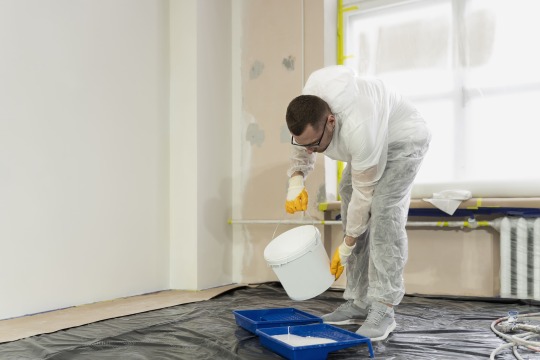
How to Find and Bid on Painting Jobs in Des Moines, Iowa
If you're a painting contractor looking for job opportunities in Des Moines, Iowa, securing high-quality leads is crucial for growing your business. Whether you specialize in residential or commercial painting, finding the right projects can be challenging. This guide will help you discover the best ways to locate and bid on painting jobs in Des Moines.
1. Join Local Contractor Networks
One of the most effective ways to find painting jobs is by joining local contractor networks. Websites like Leadconnetcs, The Blue Book, and local builder associations regularly list available painting projects. Many professional painting companies use these platforms to connect with potential clients and secure contracts.
2. Use Lead Generation Services
Investing in lead generation services, such as Lead Connects, can provide you with exclusive access to residential and commercial painting leads. Instead of spending valuable time searching for jobs, you receive verified leads that are ready for bidding, allowing you to focus on delivering high-quality painting services.
Why Choose Lead Connects for Your Painting Leads?
At Lead Connects, we specialize in providing painting professionals with high-quality, exclusive leads. Our services offer:
Verified residential and commercial painting job leads in Des Moines, Iowa.
Real-time notifications for new bidding opportunities.
A streamlined process to connect with homeowners and businesses in need of painting services.
With Lead Connects, you no longer have to chase leads—we bring potential clients directly to you, helping you secure profitable contracts with ease.
3. Partner with Property Management Companies
Property management companies frequently need reliable painters to maintain and renovate their properties. Establishing long-term contracts with these businesses can provide a steady flow of work in both residential and commercial sectors.
4. Explore Government and Municipal Contracts
Many government and municipal projects require commercial painting services for schools, offices, and public buildings. Websites like the Iowa Department of Administrative Services and city bidding portals regularly post opportunities to submit bids for these high-value contracts.
5. Network with Builders and Contractors
Homebuilders, renovation companies, and general contractors consistently hire painters for ongoing projects. Attending local networking events, trade shows, and industry meetups can connect you with key decision-makers and help you secure more contracts.
6. Market Your Painting Business Online
To stay competitive, your painting business should have a strong online presence. Optimize your website for local SEO, invest in targeted ads, and engage actively on social media. Using location-based keywords like "painters in Des Moines" and "commercial painting services" can help attract more clients.
Conclusion
Finding painting jobs to bid on in Des Moines, Iowa requires a combination of networking, lead generation, and marketing strategies. Whether you specialize in residential or commercial projects, leveraging the right opportunities will ensure a steady flow of contracts. If you're looking for exclusive painting leads, Lead Connects can help. Our premium lead generation service connects you directly with potential clients, eliminating the hassle of finding bids. Sign up today and start winning more painting projects!
#Painting Jobs#Contractor Bidding#Des Moines Painters#Commercial Painting#Residential Painting#Lead Generation#Painting Business Growth#Local Contractor Networks#Government Contracts#Marketing for Painters
3 notes
·
View notes